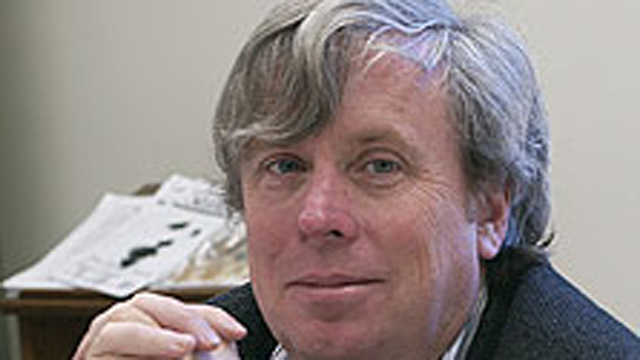Will Crystal Bridges Become the Walmart of American Art Museums?

When Walmart comes to your town, there are always two different reactions: “No! They’ll kill all the small businesses!” Or “Yes! Big selection at low prices!” A similar phenomenon is taking place in the world of American art museums as all eyes turn toward Bentonville, Arkansas, where the doors of the Crystal Bridges Museum of American Art will open this November. The brainchild of Alice Walton, daughter of Walmart founder Sam Walton and the third richest woman in the world (her sister-in-law Christy is number one), Crystal Bridges both beckons art pilgrims to a new experience and inspires dread in those who see it as a sign of the apocalypse of art in America. After reading Rebecca Mead’s New Yorker profile of Alice Walton and her museum, “Alice’s Wonderland,” it’s only natural to ask if Crystal Bridges will become, for good and/or ill, the Walmart of American art museums.
Mead begins by breathlessly recounting the December 1, 2004 Sotheby’s auction in which Walton spent more than $20 million USD plucking gems from the former collection of Daniel Fraad. Bidding anonymously by phone and astride a horse at a competitive horse show, Walton paid seven times the expected price for a work by Gari Melchers and three times the estimate for a work by Willard Metcalf, sending the rest of the bidders into a tailspin. A collector of art since the 1970s, Alice’s habit took greater flight in the early 2000s when she first came up with the idea of founding her own museum right there near Walmart Headquarters in Bentonville, a rapidly growing, but still smallish community with one very influential and rich family.
After winning works by those two distinguished, but little-known names, Alice went on to claim prizes by bigger figures such as Everett Shinn, George Bellows, and Winslow Homer. As of now, only 66 purchases have been publically announced, representing just a tenth of the acquisitions. However, according to Mead’s article, the collection does contain important works by Walton favorites Stuart Davis, Marsden Hartley, and Andrew Wyeth. “I was absolutely fascinated by the view of American history that art gave me,” Alice explains to Mead in the profile. “It was much more real to me, and much more closely tied to the political and social context of the country, and the changes, when I saw it through the eyes of the artists.” Crystal Bridges hopes to reflect the history of America through art—a cultural repository of what are nation has been and is.
As noble as that mission sounds, there are objections to the museum. First of all, its placement in Arkansas rankles many who see these great works of art doomed to obscurity far from the art capital of New York City. When Walton purchased Asher Durand’s Kindred Spirits from the New York Public Library in 2005, many felt that part of the New York heritage was being sold away. “You could extend that argument, and say no works of art belong in Arkansas,” defends Don Bacigalupi, director of Crystal Bridges, “and that is an absurd thing to say.” Walton claims that her placement of the museum in the Ozarks, at the base of a ravine rather than on a mountaintop, puts the art in a rightfully natural environment more American than in the heart of a big, industrialized city. Even the architecture of the museum itself (shown above), with rooftops resembling—according to museum employees—armadillo shells, works with this organic motif.
Secondly, many who decry the Walmart business model see too many similarities in the museum’s approach. “Critics characterized Alice as an exorbitantly wealthy heiress whose aim was to snap up icons and display them as kitschy Americana: Wal-Art,” Mead writes. “And the Walton’s retail empire—which sold ever-cheaper goods to Americans by outsourcing jobs to labor markets overseas, by forcing the closure of small stores in downtowns across the country, thanks to its vast hypermarkets—was denounced as antithetical to the values underlying the art that Walton was acquiring.” How do you sell Norman Rockwell ideals in your collection, when you essentially kill what Rockwell championed in his paintings? Mead unflinchingly hits upon this point, adding the equally unattractive fact that Crystal Bridges received sales tax breaks from the state of Arkansas. “If Crystal Bridges does what it should do,” Walton counters, “in terms of tourism, in terms of the number of jobs it has already created through a very difficult economic period, then [Arkansas] has already made that back in spades.” That’s one giant “if,” however, and one that Walmart itself struggles to answer convincingly to detractors.
Again, Alice Walton’s dream seems a noble one. Perhaps it’s big city prejudice to look askance at an Ozarks art museum. Arkansas is America, too, after all. Perhaps American art needs Alice Walton to be its champion—a modern-day Henry Clay Frick or Isabella Stewart Gardner doing the public good with their combination of great taste and greater wealth. Perhaps Crystal Bridges will become the Mecca for art pilgrims Alice dreams it will be. And yet, I can’t shake the memory as a native Philadelphian of Crystal Bridges’ attempt to buy the local treasure of Thomas Eakins’ The Gross Clinic in 2006. The Philadelphia arts community rallied together to fend off what felt like an invading horde threatening our heritage. Yes, to answer Bacigalupi, it would be absurd to say no art belongs in Arkansas. But it would also be equally absurd to say that every work belongs in Arkansas, just as not every store needs to be a Walmart. Here’s hoping for the best from Crystal Bridges, and not the Walmart-esque worst.





